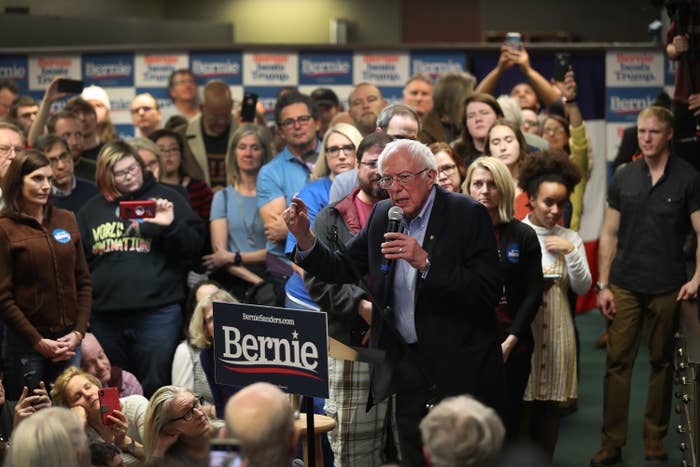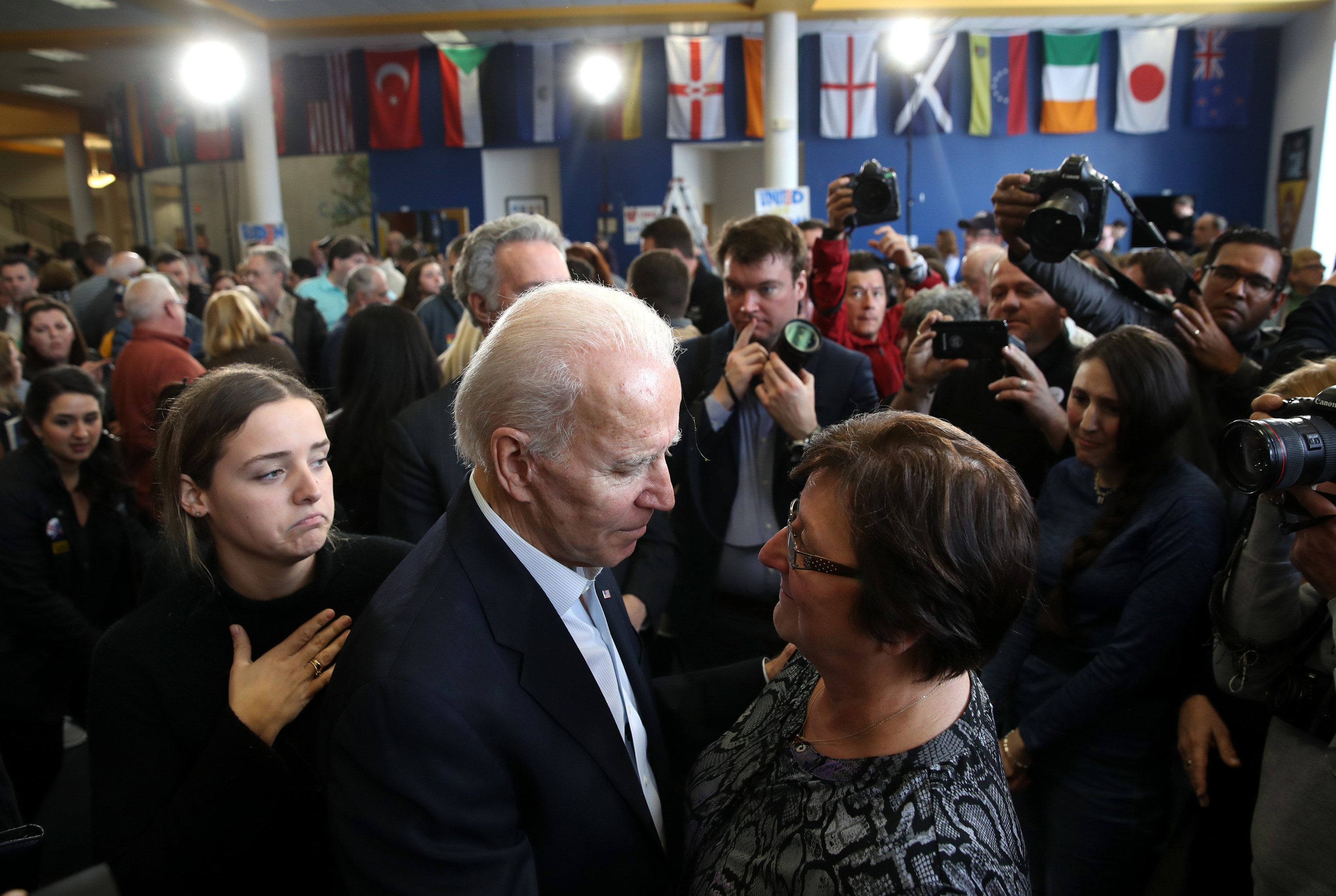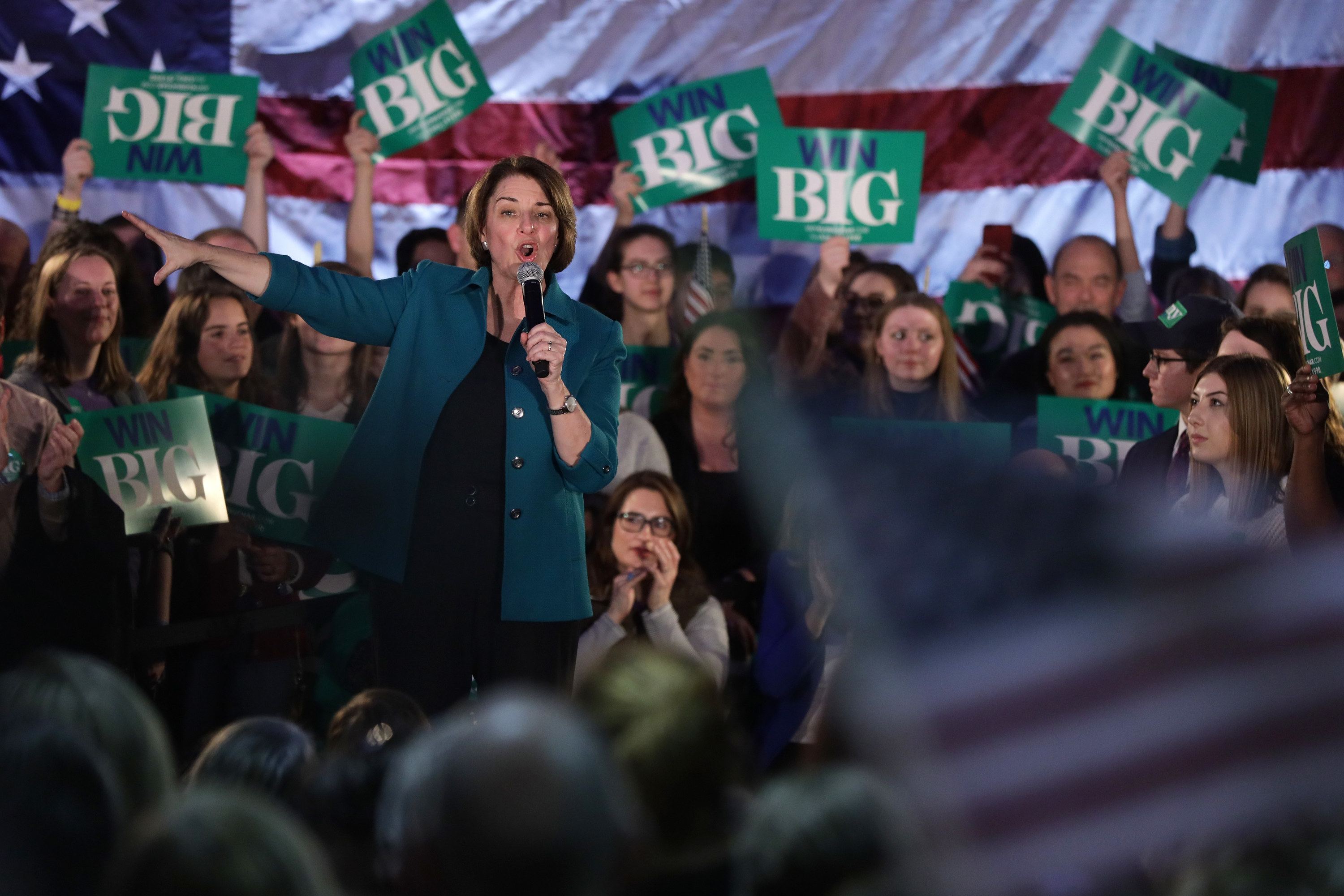
The Iowa caucus has arrived! Democracy is happening! The process of choosing a candidate to compete against Donald Trump is beginning! Everyone is yelling! What is going on???
On Monday, Iowans will be the first people in the nation to say whom they want to be the Democratic nominee in the 2020 election. They will express their views through a strange and unique (some might say antiquated!) ritual called a caucus.
Some people love the Iowa caucus, and some people hate it. During the last presidential cycle in 2016, it caused a WHOLE LOT of drama. But Iowa state law mandates that the caucus must be the first contest in any presidential election year, and that year has begun, so here we are!
How does it all work, you ask? Let’s break it down…
First of all, what even is a caucus?
A caucus is like a primary, but it is NOT a primary.
Essentially, a caucus is a gathering of people united in a political cause for the purpose of making a decision.
The goal is the same as other presidential primaries, which is to determine who the party’s nominee for president should be. UNLIKE a primary, though, people will gather in person at their precinct or another location. Instead of voting by ballot, they will physically gather together in groups to indicate which candidate they support.
Those gatherings during caucus night will determine how Iowa’s delegates will vote at the Democratic National Convention in July, and ultimately, when combined with delegates from other states, who gets to be the nominee.
Why is this such a huge deal?

Because it’s the first! After a year of campaigning, this will be the first time people in any state get to say whom they want to be the democratic nominee.
Although Iowa — with just 49 — doesn’t have anywhere near the highest number of delegates (that would be California, with 495), going first gives it a lot of influence. The caucus is a huge deal because it sets the stage for the rest of the primary season — if someone wins, or just does better than expected, it could bring way more attention to their campaign and convince some voters that they’re the person who can actually win in November. Some people may drop out if they do poorly, and other people might come away with a surprising lead, like Barack Obama did in 2008.
Since it began in 1972, the caucus has also frequently predicted the Democratic nominee, and sometimes the Republican nominee — though not necessarily the president.
Is it weird that Iowa goes first? What impact does it have?
Yep, it’s pretty weird. Iowa state law mandates that the caucus MUST happen at least 8 days before any other state’s nominating process, in any presidential election cycle.
New Hampshire state law says that New Hampshire must have the first primary of the election cycle, at least 7 days before a “similar election” in any other state. But Iowa has a caucus, NOT a primary. So they both get to be first, kind of.
More importantly, critics say that it gives undue influence to a state that doesn’t reflect the Democratic base these days. Candidates spend a crazy amount of time in Iowa trying to persuade a relatively small number of voters so that they can claim the early lead. And it means that they cater to voters who are overwhelmingly white when the party increasingly relies on people of color, and black women specifically, to win.
Is there a good reason for Iowa to be first? As former Senate majority leader Harry Reid told the New York Times, “None whatsoever. But they’re going to be there, we might as well move on.”
OK, so how does it actually work?

The schedule for the caucus is divided into three parts: introductory business, presidential preference, and party business. Doors open at 6:30 p.m. CT and caucusgoers must be in line by 7 p.m. to participate.
The main event is the second part, when people choose their nominee. Caucusing takes place in person, usually in precincts. There are 1,682 precincts around the state this year. A precinct is just a geographical designation that says that all of the people who live in a given area will caucus together. Everyone who caucuses in a particular precinct will meet in a location like a church or a school. In some cases, one location might host multiple precincts, where one precinct might be in the gym and another precinct is in the cafeteria. This year there will also be “satellite” caucus locations around the state, around the country, AND even in a few cities outside the US (more on these later). Instead of the closed ballot that is used in most states, caucusgoers will make their selection by congregating publicly in groups based on whom they support.
This next part is a little technical, but stick with me! I have faith in you and us and our ability to understand democracy. Here we go...
To determine the winner, there will be two rounds of caucusing, or alignments, this year. After the first alignment, in most instances, a candidate must get at least 15% of the attendees to be considered viable. If a candidate does not have support from 15% of the attendees in the first round, that candidate is nonviable. Supporters of a nonviable candidate have a couple of choices: 1) They can choose another viable candidate to support; 2) they can try to convince others from other nonviable groups to join them to meet the 15% threshold; or 3) they can remain uncommitted. A major change this year is that Iowans whose candidates DO meet the 15% threshold in the first round may NOT change their preference in the second round (again, more later; some people are very mad about it).
Each precinct will record the raw totals from the first and second rounds, in addition to what are called state delegate equivalents. This is the number that indicates who gets the votes at the DNC.
What happens after the precincts have decided on viable candidates?
After the second and final alignment, the precincts determine how many delegates each candidate will get. Each viable candidate group then elects delegates to go to the county convention, who will in turn elect delegates to the (congressional) district convention and state convention, and those district and state delegates elect the delegates that will go to the national convention to vote on the nominee. Delegates, delegates, more delegates!
It sounds complicated, and the math is weird, especially for the satellite caucuses, which count differently than normal precincts. But ultimately, the 41 pledged delegates representing the state at the national convention are allocated proportionally according to the precinct results on Feb. 3.
Wait, did you say 41 delegates or 49?

OK, let’s focus on the convention for a sec. After all of the primaries in each state happen, delegates from each state will meet in Milwaukee from July 13-16 to vote on the nominee at the Democratic National Convention.
There will be a total of 4,754 delegates from around the country at the DNC. Of those, Iowa has 49 delegates. HOWEVER, there are different kinds of delegates. Forty-one of Iowa’s delegates to the DNC are pledged delegates and 8 are automatic, or “superdelegates.” The superdelegates from each state are usually Democratic officials like governors or members of Congress, and they can vote for whoever they want at the convention, BUT they will only come into play if the convention is contested, which is unlikely, so we won’t talk about them now.
The 41 pledged delegates will be divided up according to the caucus results and obligated to vote for a specific presidential candidate. So even though they won’t actually vote on the nominee until July, we will start to get a picture of who the candidate might be Monday night, and that picture will become clearer and clearer over the next few months as each state votes.
What’s different this year, and why did they change it?
There have been critics of the Iowa caucus for many different reasons, for a long time. However, the 2016 caucus was especially chaotic because the competition between Hillary Clinton and Bernie Sanders was so tight. Some precincts didn’t come to a decision until late into the night, and even then they were only able to decide by a coin toss! There were some discrepancies over the results in a few precincts, and the Iowa Democratic Party refused to review the results at first. This fed conspiracy theories, but the party eventually relented and reviewed a few cases, discovering that there were, indeed, some errors. It was a whole big mess.
The party made a number of changes to the process this year in response to those issues. It also has worked to increase accessibility (e.g., for people in the military or nursing homes) and turnout in underrepresented groups (e.g., people of color and LGBTQ Iowans).
Some of the changes are pretty straightforward: Caucusgoers will also be able to check in early to save time. And before caucusing, various officials must now read a statement about the inclusivity of the party.
Others seem like they should be obvious: The precincts will keep paper records from each caucusgoer with their choice in each round of caucusing in case they need to check them later. It is objectively ABSURD that this is new, but there weren’t any records documenting the preferences of each caucusgoer previously, so in 2016, when Bernie Sanders’ campaign called on the party to release the raw totals, it wasn’t really able to do so. Candidates this year will be able to ask for a review of the raw totals and challenge them.
Other changes, like the decision to limit the caucusing to two rounds and lock results for candidates who reach 15% in the first round, mark a dRaMaTic change in the process. The hope with these two changes is that the caucus will be more efficient and hopefully avoid another very late night like in 2016. Some caucusgoers, though, who like to start the first round in the undecided camp and then see which way the winds are blowing, are MAD about the change, according to Iowa-based writer Lyz Lenz. If that undecided group ends up with 15% of the total after the first round, under the new rules they’ll be stuck there.
Another huge change is the introduction of “satellite” caucuses. In the past, caucusgoers could only participate if they were present at a precinct at exactly 7 p.m. on caucus night. This year, the party allowed Iowans who might not be able to make it to a precinct to apply for satellite caucuses elsewhere. There will be 87 satellite caucuses, 60 of which will be in Iowa. The rest will take place outside the state, including three in international locations — France, Scotland, and Georgia (the country).
The party also allowed some of those satellite caucuses to meet on different dates and at different times in order to accommodate Iowans with strict schedules, like a work shift that wouldn’t allow them to attend at the usual time.
The change that is probably causing the most hand-wringing among the candidates, though, is the decision to report multiple results on caucus night. In an effort to be more transparent, the party decided to report the raw totals from the first and second rounds in each precinct, in addition to the main number — the state delegate equivalents — which determines how the national delegates will be allocated. Although the delegates are what really matter, multiple results may mean that multiple candidates try to declare “victory,” or at least spin the narrative in their favor.
I think I get it! But...who actually wins?

In a normal election, it is very obvious who wins. The 2020 Iowa caucus — as we’ve discussed — is not normal. The state party itself is not expected to declare a winner.
Because of the new rules for this year, we’ll get three sets of numbers out of the caucuses.
Each precinct will record and eventually release the raw totals from the first round of caucusing, as well as the raw totals from the final round after candidate cuts for viability. Then each precinct will release what are called state delegate equivalents, basically a number that indicates who gets the delegates at the national convention. Traditionally, the person with the most state delegate equivalents is the person who wins, and that’s the metric BuzzFeed News and other media organizations will be using.
But! It is very possible that there winds up being a candidate who has the highest raw total from the first round, or a candidate with the highest raw total from the second, but NOT the highest number of state delegate equivalents. And it’s very possible that those candidates argue that they, in fact, are the winner of the Iowa caucuses. So, brace yourselves — there could legitimately be three candidates who say they won. Yikes!
TL;DR: What’s the main thing I need to know?
Democracy is messy, and Iowa is an especially messy bih who lives for drama.
On the upside, we’ll start to get some idea of what voters want and who will compete against Donald Trump in the general election in November. On the downside, it may not be a CLEAR answer, and the campaigns will probably fight over who won.
CORRECTION
The Iowa caucus will take place on Monday, Feb. 3. Due to an editing error, a previous version of this post misstated the date.
